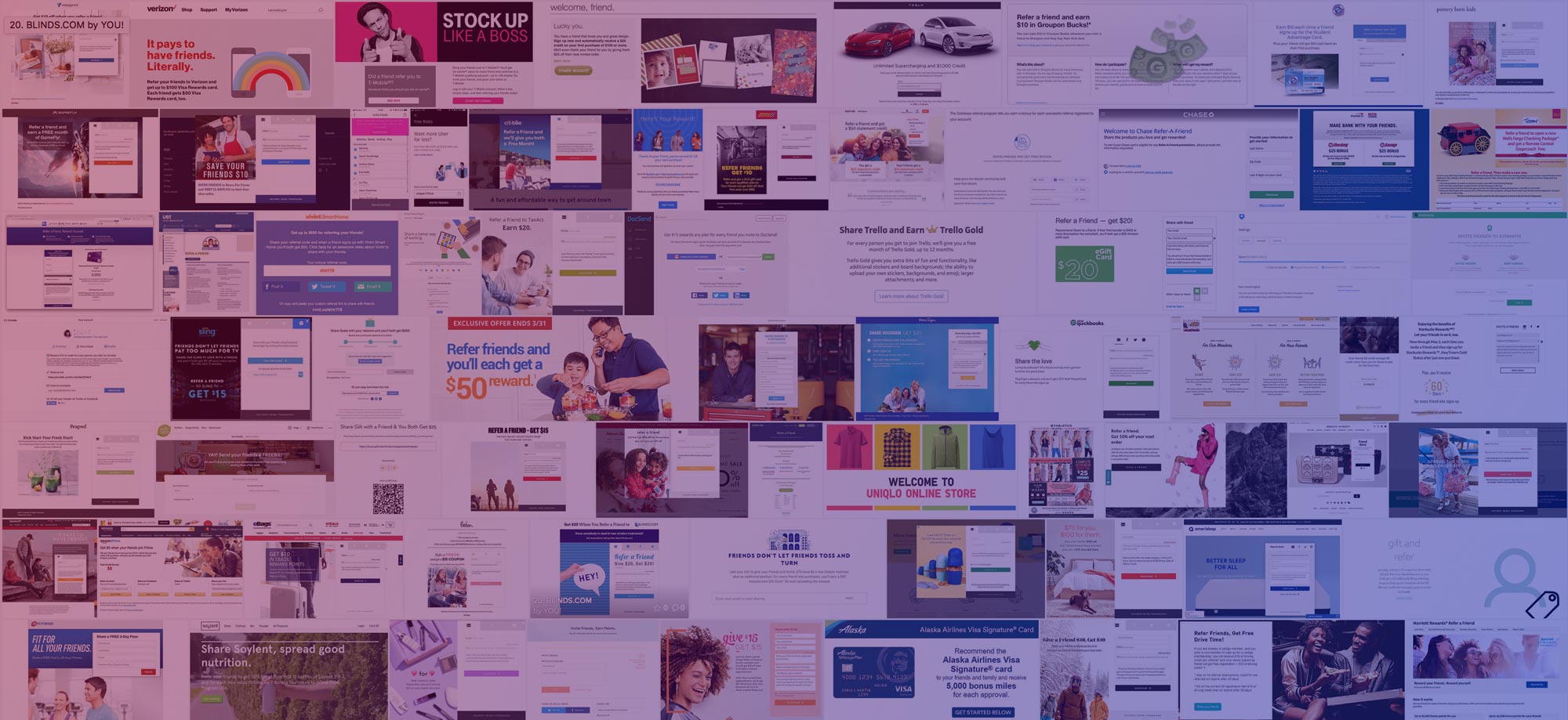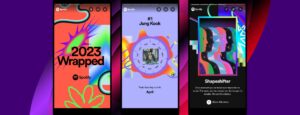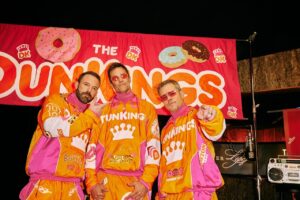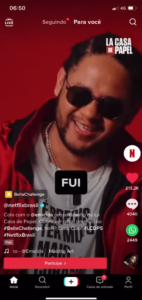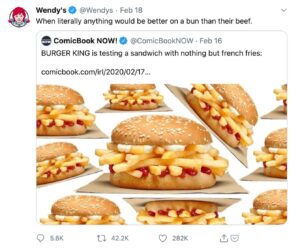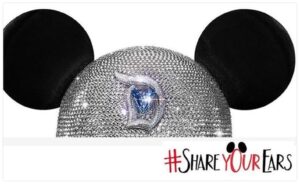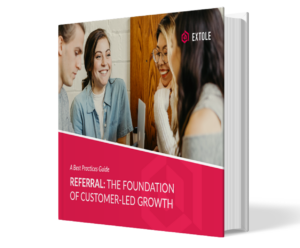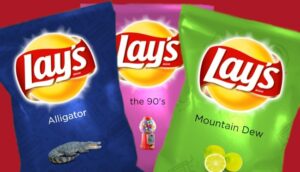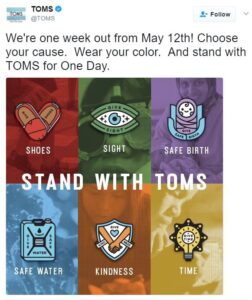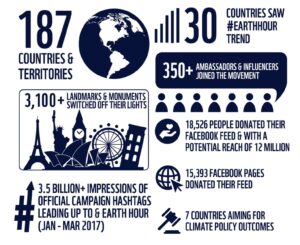There are over five billion social media users on planet Earth, which means social marketing is a powerful tool for inciting awareness and excitement for your brand. But tread carefully. Social media can give, but it can also take away. When social marketing is done poorly, even loyal customers cringe in embarrassment. Take, for example, Kendall Jenner’s now-infamous Pepsi video. Pepsi thought it would strike social gold by marrying a timely issue (social protests) with a popular social media star. Instead, the internet ruthlessly mocked the three-minute YouTube clip. Pepsi pulled the ad, but the damage to their image had already been done.
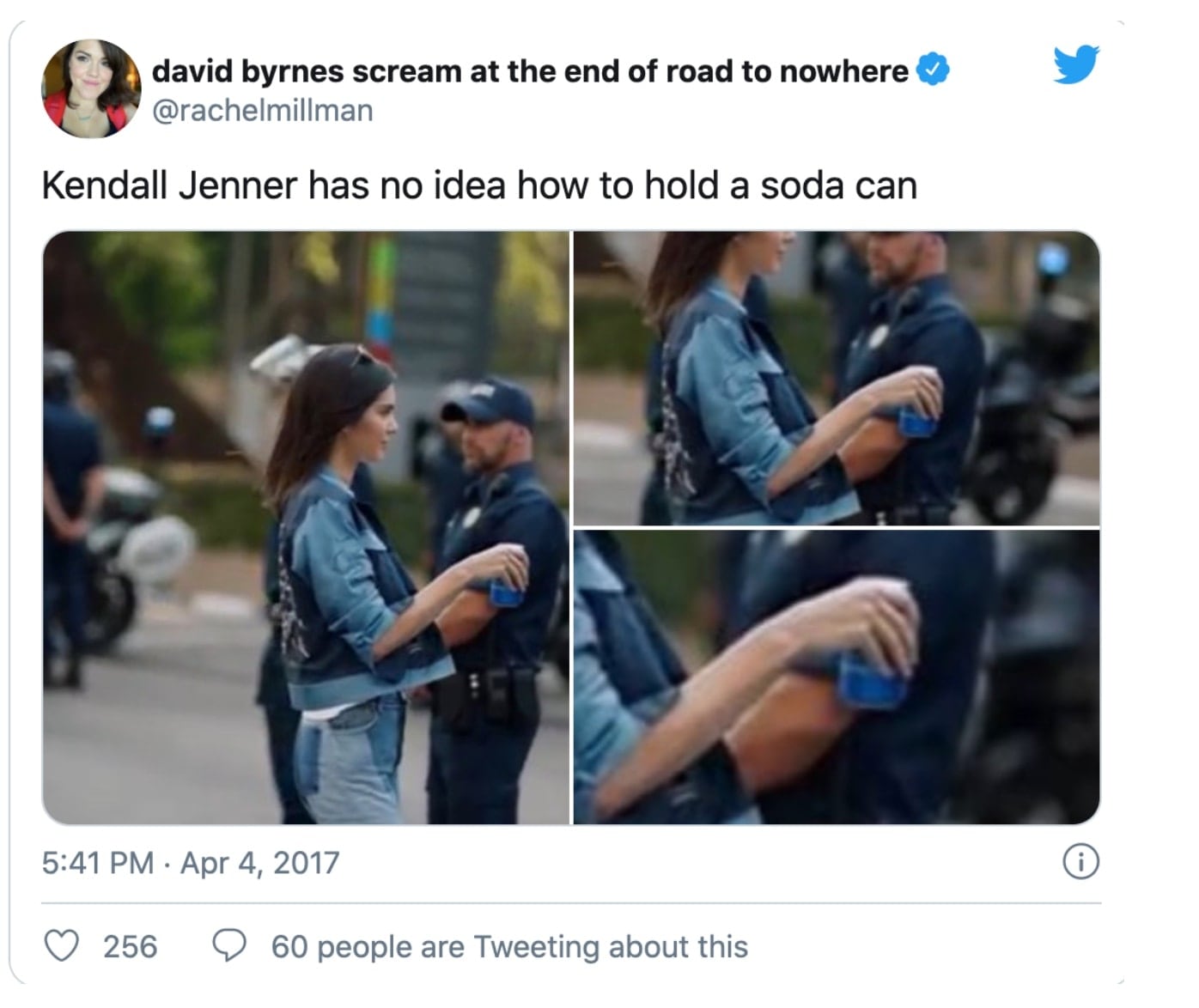
So, how do you harness the incredible power of social marketing without looking tasteless or out of touch? The most successful social marketing meets the following criteria:
- Comes from a place of authenticity
- Builds brand awareness through social amplification
- Inspires brand loyalty
- Has a novel or original approach
In this article, we’ll highlight 12 of the best social marketing examples from the last few years and explain why they worked so well.
1. The Barbie Movie Lets Everyone Play Along
Even before the Barbie movie debuted in theaters in 2023, it had already achieved peak cultural saturation through an expansive and coordinated media campaign that relied heavily on social marketing.
Along with teaser ads and branded product lines, Warner Brothers released a Barbie Selfie Generator that lets anyone participate in the Barbie experience. Fans posted their funny Barbie selfies across social media channels, generating buzz and enthusiasm for the movie. The Barbie movie shattered all expectations and grossed over 1 billion dollars worldwide.
Takeaway: Encourage potential customers to identify with your brand. Allowing potential viewers to “play” with the Barbie brand encouraged them to remember the fun and possibilities of playing with Barbies and increased their enthusiasm for the movie.
2. Nat Geo Taps Facebook for Photos
My Nat Geo Cover Shot was a Facebook-powered contest used to promote the Cover Shot TV show. It tapped into the network of over 10 million people who followed the National Geographic page, allowing them to create their own covers using photos uploaded through the app.
National Geographic connected with its audience by understanding the powerful link between photography buffs and nature. The contest allowed users to share their created covers and enter a contest to have their photo featured in the magazine, as well as an expenses-paid vacation.
The Lesson: Give brand advocates the chance to showcase their creativity and skills. Bonus points if you offer some kind of reward or incentive that encourages them to share what they create with others and further spread brand awareness.
3. Spotify Wrapped Makes Everyone a Taste-maker
In what is frequently considered one of the most successful viral marketing campaigns of all time, Spotify leveraged its yearly recap feature to turn users into (somewhat) inadvertent evangelists.
Each December, Spotify pulls data to create a custom year-end update for each user. It’s become a year-end ritual for Spotify users to share their Wrapped profiles across social media and subtly boast, or openly joke, about their musical tastes. In 2021, 120 million Spotify users accessed their Wrapped, and the #spotifywrapped hashtag has over 66.5 billion views on TikTok alone.
In 2023, in addition to revealing users’ most listened-to songs, the app assigned one of 12 listening character types to each user and identified which geographic areas their listening tastes most aligned with. People went wild for it.
The Lesson: Create a campaign that appeals to users’ individuality to encourage social sharing. Bonus points if it highlights your product’s functionality to create a flywheel effect that invites new users to try you out or dormant users to get back in the game.
4. Dunkin Donuts Clowns Around with the DunKings
Dunkin Donuts has a long history of successful social media campaigns and a light-hearted willingness to make fun of its own brand. In 2023, it found perfect brand synergy with the actor Ben Affleck, who has frequently been photographed by the paparazzi while on Dunkin’ runs.
During the Super Bowl, Dunkin Donuts aired a commercial featuring the much-loved sons of Boston — Ben Affleck, Matt Damon, and Tom Brady — as a group called the DunKings who rapped about the brand for Affleck’s real-life wife, Jennifer Lopez. The ad was funny and self-effacing and quickly was dubbed the best commercial of the night by fans and media alike.
In the days following the big game, Dunkin dropped several follow-up vignettes on Instagram and YouTube, which only enhanced the buzz around the collaboration.
The Lesson: Find the perfect brand partners, and don’t be afraid to get goofy. And remember that splashing out on a pricey commercial can just be the tip of the iceberg; creating a halo campaign that continues to spread on social media just ensures even more ROI on your brand spend.
5. Netflix treats fans like equals on TikTok
If you want to talk to GenZ, TikTok is the social media channel to use, but most brands haven’t yet figured out how to do it well Netflix, on the other hand, taps into this audience by appearing authentically on the platform, not as marketers, but as fellow movie and television fans.
People already share their opinions and thoughts on popular shows on TikTok, so Netflix’s job is to find opportunities to join the conversation in a way that adds value. For example, for the movie The Gray Man, Netflix created TikTok-specific behind-the-scenes movie content and interviews with the directors for the #filmtok community. For the series Moneyheist, they created a branded hashtag challenge where users could create a custom rap about the series. A whopping 454,000 unique users joined the challenge, generating over a billion views.
The Lesson: Embrace your audience’s enthusiasm and join in the conversation, offering something unique and platform-specific to reward fans for their engagement.
6. Dove Finds Beauty in Everyone
It’s been over 20 years since the genesis of the classic Dove “Real Beauty” campaign, and its longevity is a testament to how well it resonates with Dove’s audience. Building on the original campaign, Dove created “behind the scenes” videos showing what goes into a billboard. The primary ad showed the transformation of a “normal” person into a billboard supermodel, as well as the outrageous amount of work and digital editing required.
The brand has also made people cry tears of genuine joy on camera by having others describe their unique beauty. Clearly, they’ve struck a chord that has turned buyers into brand advocates. The magic of Dove’s Real Beauty campaign comes from finding a message that resonates. This requires understanding the zeitgeist and being willing to go against the grain.
The Lesson: Customers like to get an exclusive, behind-the-scenes look at insider information they otherwise wouldn’t be privy to. When it’s tied to a message that resonates (like Dove’s assertion that everyone is beautiful in their own unique way), this “backstage glimpse” makes fans feel closer to a brand and increases their affinity without coming across as fake.
7. Lush Gives Social Issues Center Stage
Lush says it is building a cosmetics revolution to save the planet. And they aren’t stopping there. The company’s commitment to environmental and social issues and movements, from LGBTQ+ rights to Black Lives Matter, dominates its Instagram and Twitter feeds, where products and branding play second fiddle to real-world issues.
This “un-marketing” strategy reflects the company’s grassroots approach to brand awareness. And it’s been a stunningly effective move: Lush has built a billion-dollar brand without spending a dime on traditional advertising.
The Lesson: Genuine altruism can go a long way. When it comes from a place of authenticity and is backed up by corporate decisions, centering others can raise awareness without watering down either the social issues at hand or your brand impact.
8. Equal Parts Lets People Shop While They Browse.
Equal Parts sells “better tools for busy cooks.” They don’t just use their Instagram account to advertise their goods; users can buy products directly from Equal Part’s account using Instagram Shopping.
According to BigCommerce, brands have seen a 1,416% increase in traffic and a 20% increase in revenue by instituting the shopping feature. It’s an easy way for Equal Parts to convert their 20,000-plus Instagram followers into customers.
The Lesson: Make the path to conversions as short and simple as possible for shoppers.
9. Have a Coke and a Smile
If you’re trying to make a personal connection, using someone’s name is a smart way to do it. But is it scalable? In the case of Coca-Cola, the brand gave up valuable space on its label, encouraging buyers to “Share a Coke with _____,” in this classic campaign. This led to a buying spree and the infamous Coke logo being posted everywhere online by users who were excited to find their names on bottles.
When a customer buys your product and then advertises their purchase to everyone they know, that’s the stuff of marketing dreams.
The Lesson: Personalization at scale is a surefire way to capture the attention of your target audience. While it might seem difficult to execute, Coke’s clever approach shows that it can be done.
10. Wendy’s Weaponizes the Clapback
There are unique brand voices, and then there’s Wendy’s. The company has taken to witty sparring matches on Twitter, and the risk is paying off. Wendy’s has won accolades from customers and media alike for removing the “filter” consumers normally see on corporate social media accounts.
When a brand decides to stop talking “like a brand,” it has to walk a fine line between being genuine and trying too hard. Wendy’s has nailed this mix perfectly by aiming its sass at competitors, not customers. A quick Google search will pull up thousands of articles about the company’s social media presence, which has captured over 3.7 million Twitter followers.
The Lesson: Don’t be afraid to show some personality. Just make sure it comes across as genuine and not forced. Oh, and always punch up (or across, at your competitors), never down.
11. Walt Disney Shares Ears and Dollars
Walt Disney’s liberal use of social media has led to some amazing campaigns over the years. One of its most memorable was the 2018 #ShareYourEars campaign. Disney encouraged fans to use the hashtag along with photos of themselves wearing Mickey Mouse ears. For each photo shared, Disney would donate $5 to the Make-A-Wish Foundation, up to $1 million. The campaign surpassed even Disney’s expectations, eventually garnering over 200,000 shares, which Disney echoed by upping its donation to $2 million.
The Lesson: Disney followed an old rule of interaction: don’t make the user change their behavior. Disney visitors are prone to sharing their selfies anyway, so the “feel good” benefit of adding a hashtag to get a donation made to a beloved is an easy extra step.
Referral Marketing – The Best Practices You Need to Know
Written by veteran referral marketers, this guide will help you optimize your referral marketing program and supercharge growth.
12. Lay’s Recruits Flavor Savers
If you’ve seen Lay’s flavors like Southern Biscuits & Gravy or New York Reuben, then you’ve already seen the end result of Frito-Lay’s annual “Do Us a Flavor” campaign. The snack food brand holds an online contest, allowing people to submit their flavor ideas. The winner takes home a cool 1 million dollars and actually gets to see their flavor idea come to life. It’s an annual exercise in brand awareness, and the notorious Internet trolling has become almost as much of a contest as the contest itself. Entries like “Buttered Alligator” or “Existential Crisis” gather a chuckle while being shared online, with the Lay’s branding right above the ill-fated flavor idea.
The Lesson: Don’t be afraid to let fans get wacky and play with your social contests and other campaigns. (Almost) any press (social media attention) is good press (attention).
13. TOMS Gives Back
TOMS has always been a brand of a different sort. The company started with a mission to improve lives by giving a pair of shoes to someone in need every time a customer bought a pair. This spawned the #WithoutShoes campaign, where customers and brand advocates around the world joined TOMS to give back to those in need with a one-day flood across social media.
As the years have passed, TOMS has expanded its efforts to provide clean water, offer vision screenings, advocate for safer births, and work on bullying prevention. The #WithoutShoes campaign has expanded as well, encouraging followers to pick a color and a cause each year in May.
The Lesson: TOMS’s marketing strategy works for three reasons: the low barrier to entry, the participant’s feeling of doing good, and the sense of being part of a community.
14. WWF Turns Off the Lights
In 2007, the World Wildlife Federation (WWF) partnered with a Sydney-based advertising agency to produce Earth Hour. This symbolic gesture involves people around the world turning off nonessential lights for one hour in a show of solidarity and commitment to the planet.
As one of the longest-running social marketing campaigns, Earth Hour has been wildly effective in raising awareness for the WWF.
The Lesson: Cause-related campaigns create a perfect opportunity to actually help while increasing brand awareness.
What These Social Marketing Examples Have in Common
There are a million ways to go viral on social media, but they all require one thing: bravery. No brand has ever launched a successful social media campaign by sticking to business as usual or copycatting other successful campaigns. Instead, the brands above took the risk and did something original, unabashedly weird, funny, or even controversial.
Successfully leveraging the power of social marketing often means taking a risk — but making it a calculated one. Root your efforts in authenticity, and try to find organic connections between your brand and your customers, rather than forcing it. Then, sit back and watch the social love roll in.
Check out the full spectrum of customer engagement opportunities that Extole unlocks.
